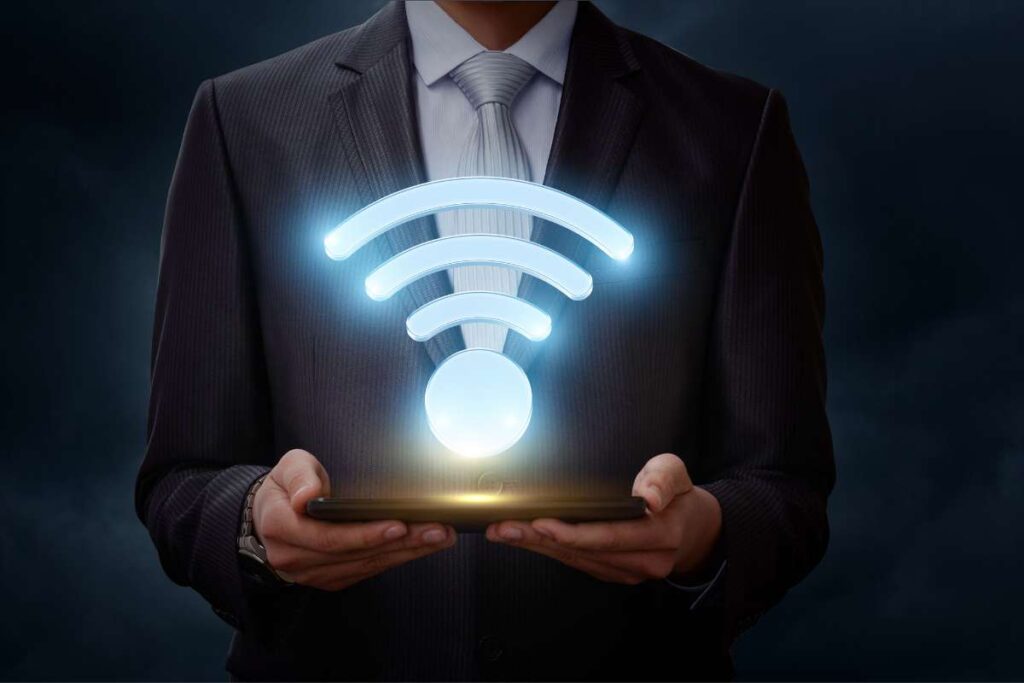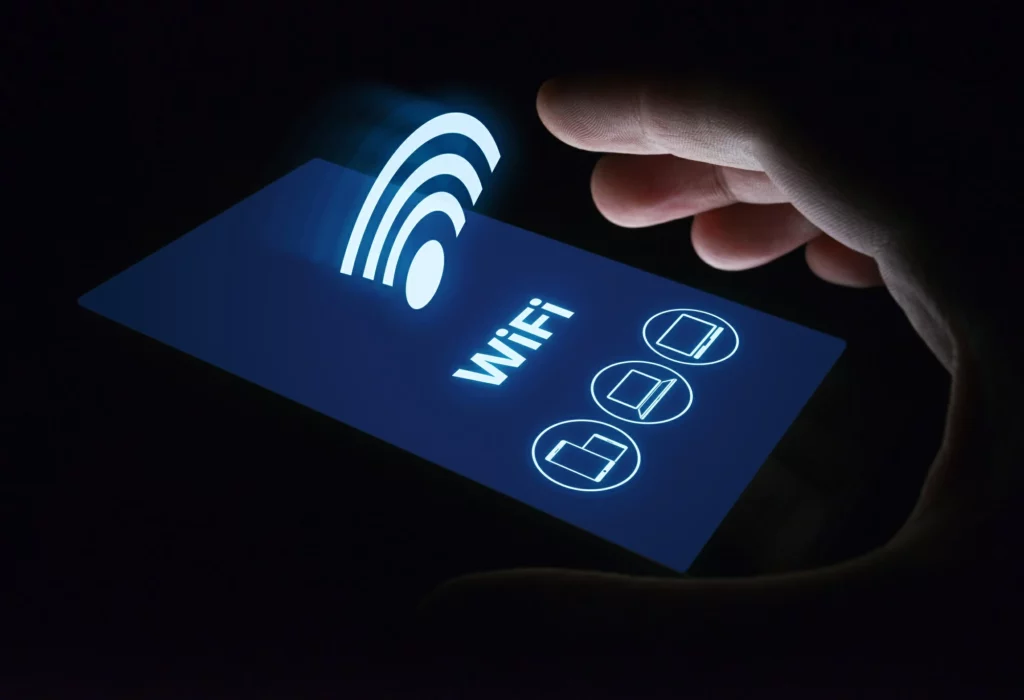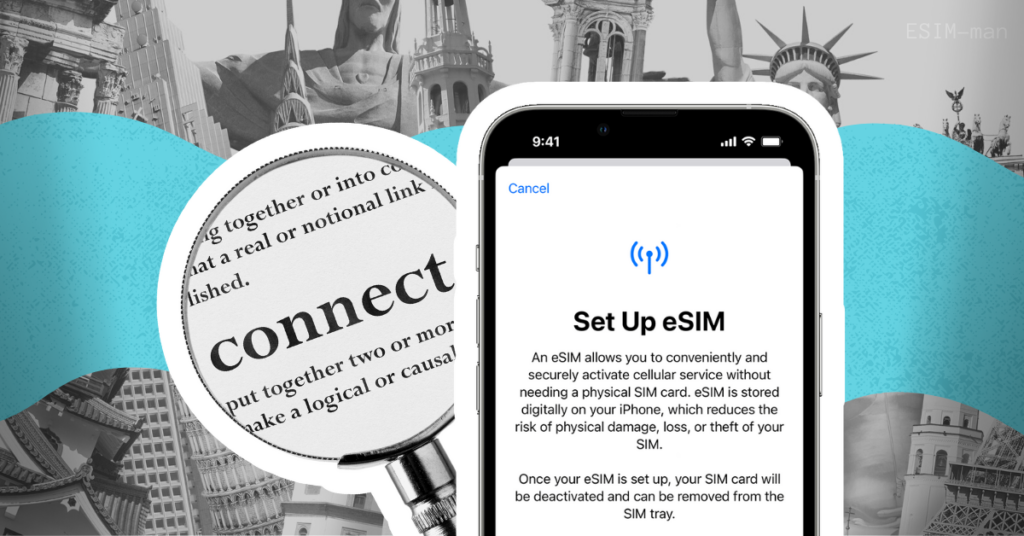Table of Contents
Is your phone struggling to connect to Wi-Fi, leaving you without internet access? We’ve all been there. We understand the frustration of endlessly loading web pages. But don’t worry — we’re here to help! Let’s explore some troubleshooting tips to get your device back online and you back to enjoying the internet. In this helpful guide, we’ll cover common issues like the trouble of being connected without internet linkage. In addition, we’ll also discuss the key bugs of connecting to public, home, or work Wi-Fi networks. Say goodbye to connection problems! We’ll give you practical solutions to fix your phone’s Wi-Fi issues.
Related: “Is it Safe to Use Free Wi-Fi at the Airport?“
What Exactly Wi-fi is and How Does It Operate?
Before we decode the prevailing quandaries concerning Wi-Fi connectivity, it’s crucial to comprehend the workings of Wi-Fi functionality. This comprehension is crucial in tackling common hiccups efficiently to fix Wifi bugs..
Therefore, Wi-Fi, abridged from Wireless Integrity, embodies a technological wonder facilitating smooth internet access or inter-device communication without tangible tethering. Departing from traditional cable links, Wi-Fi utilizes radio frequencies to enable data transfer between devices and a router or access point.

Exhaustive Analysis of Wi-Fi operation
- Electromagnetic Radiation: Wi-Fi functions utilizing electromagnetic waves, predominantly within the 2.4 GHz or 5 GHz frequencies. These spectra are open to the public without necessitating individual authorizations.
- Central Nexus or Entry Point: At the heart of Wi-Fi infrastructure lies a central nexus or entry point, acting as a focal point for device interconnection. This pivotal apparatus retrieves internet data via a wired conduit, like Ethernet, and transmits it wirelessly through electromagnetic radiation.
- Network Interface Mechanism: Each device seeking integration into a Wi-Fi ecosystem possesses a network interface mechanism or Wi-Fi receiver. This hardware module enables wireless data transmission and reception.
- Unique Network Identification: Wi-Fi networks are distinctly labeled with a Service Set Identifier (SSID), functioning as a unique identifier. When scouring for available networks, devices conduct scans to display SSIDs for user selection.
- Authentication and Encoding: To ensure data security, Wi-Fi networks often require authentication and encoding. Verification involves confirming the identity of connecting devices, usually through a code or passphrase. Encryption techniques, such as WPA2 or WPA3, encode data during transmission, preventing unauthorized access.
- Link Establishment: Upon selecting a Wi-Fi network and entering necessary credentials, a device establishes a connection with the nexus or entry point. This connection facilitates data exchange between the device and external entities, whether the internet or interconnected devices.
- Data Transmission: Information traversing a Wi-Fi network is fragmented into packets, compact data units. These packets travel between the device and the nexus/entry point via electromagnetic radiation. Upon reception, the nexus/entry point processes and forwards packets to their intended destinations, such as website servers or connected devices.
- Range and Reach: Wi-Fi coverage span depends on factors like nexus/entry point transmission strength, obstacles (e.g., walls, furniture), and environmental conditions (e.g., interference from electronic devices). Signal strength diminishes with distance, affecting connectivity reliability and speed.
Overall, Wireless Integrity technology provides convenient and adaptable wireless connectivity. In fact, it enables easy access to the internet and nearby network resources across a wide range of devices and locations.

My Phone Won’t Connect to Wi-fi — Common Reasons for Network Connectivity Problems
Now the time has come — we’ll discuss the top key reasons for each problem with Wifi you can face.
- Network Problems. The Wi-Fi setup itself might face difficulties, like frequency disruptions, router glitches, or network congestion.
- Validation Hindrances. Incorrect Wi-Fi passphrase or authentication settings on the smartphone could hinder its connection to the network. To fix Wifi work, check your pass code.
- Software Glitches. Software bugs or irregularities within the smartphone’s operating system or the router’s firmware may disrupt Wi-Fi connectivity.
- Network Setup. Erroneous network setups on the smartphone, such as an Internet Protocol (IP) address clash or Domain Name System (DNS) issues, could block Wi-Fi connection.
- Signal Coverage. The smartphone might move out of the Wi-Fi router’s range, resulting in a weak or nonexistent connection problem with Wifi.
- Airplane Mode. Accidentally turning on Airplane Mode or disabling Wireless Integrity (Wi-Fi) on the smartphone could impede its Wi-Fi network connection.
- Access Point Configuration. Incorrectly configured access point settings, such as incorrect security protocols, channel interferences, or Media Access Control (MAC) address filtering, might prevent the smartphone from connecting.
- Device Compatibility. Incompatibility between the smartphone and the Wi-Fi infrastructure, such as using an outdated Wi-Fi standard or incompatible frequency bands, could cause connection issues.
- Software Updates. Outdated software on the smartphone or access point might contain bugs or security vulnerabilities that affect Wi-Fi connectivity. To fix Wifi linkage in this case, just upgrade your operating system version.
- Hardware Issues. Faulty hardware components in either the smartphone (e.g. Wireless Integrity Wi-Fi antenna) or the access point (e.g. faulty transmitter) can lead to connection problems.
Why Can’t I Connect to My Wi-fi?
Encountering any problem with Wi-Fi connectivity on your device can be vexing. However, a plethora of troubleshooting methods exist to tackle this issue. Follow the exhaustive guide outlined below to address the most prevalent and obstinate Wi-Fi dilemmas on your device.
- Scrutinize Wi-Fi Settings. Access the Settings app on your mobile device and select “Wi-Fi” to verify its activation. Ensure your iPhone or Android device has successfully linked to the appropriate Wi-Fi network.
- Purge Hotspot Data. If your device connects to the wrong network or notifies you of authentication issues, consider purging the network details. Once done, initiate a fresh connection process.
- Reboot Your Device. Sometimes, a simple reboot can resolve Wi-Fi glitches. Press and hold your device’s power button to restart it. This is the most popular method to fix Wifi bugs.
- Cycle Your Modem. Power cycling your modem can rejuvenate its settings, potentially resolving Wi-Fi issues. Unplug your modem from the power source, wait approximately thirty seconds, then plug it back in. Wait for the modem to fully restart before attempting to reconnect with your iPhone.
- Update the Operational System of your device. Ensure your iPhone’s operating system is up to date, as updates often contain fixes and enhancements related to Wi-Fi connectivity. Navigate to Settings of your cell phone. There you’ll find the section called General. After this, you have to click on the button which says “Software Update”. That’s how you may check for and install any available updates — the cell phone will show you what to do.
- Reset the configs of your web network. Resetting network configurations can fix Wifi and cellular connectivity issues, including problems with open wireless hotspots. To do this, go to your Apple or Android handheld equipment’s main settings. There goes the same scheme: you have to choose the option called “General”. After these, you should click on the “Reset” button and select the “Reset Network Settings” variant. Your cell phone may ask you to enter your pass code.
Conlusion
In conclusion, though encountering Wi-Fi connectivity challenges may induce frustration, they often present opportunities for resolution through diligent troubleshooting efforts. By grasping the typical causes of connection issues and implementing tailored solutions specific to your device, you can establish and maintain a dependable Wi-Fi connection to fulfill all your online requirements. We wish you luck in fixing your problem with Wifi linkage!






